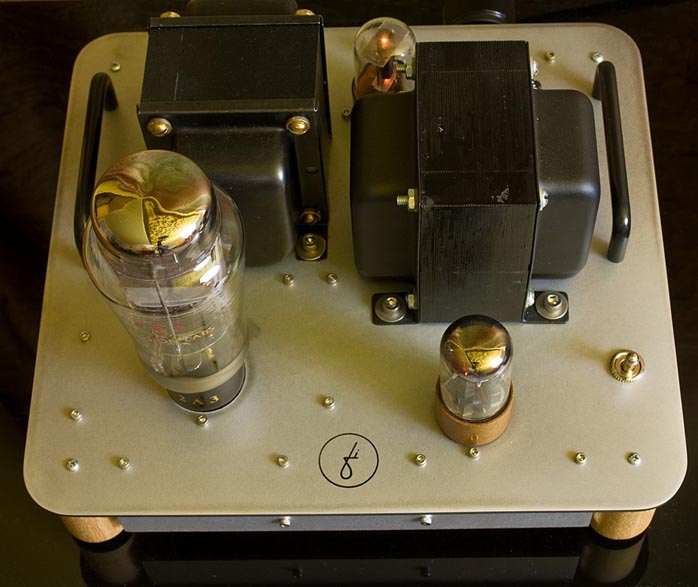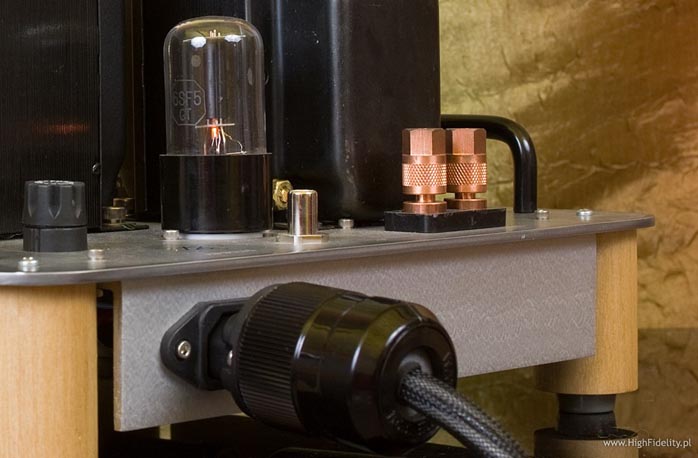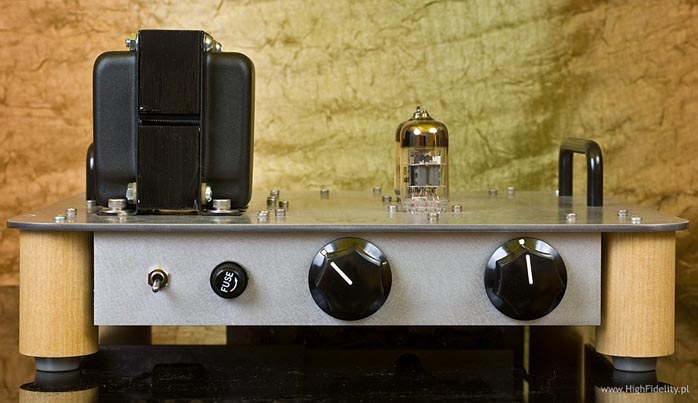This review page is supported in part by the sponsors whose ad banners are displayed below |
 |
 |
What did I mean by reasonable pricing? The top 2A3 monos under review sell for $3.375 and the line stage adds $2.850 (which in Poland must factor a 3.5% customs fee, 22% VAT, ship fees and our lower salaries).

To me these are reasonable prices and possible only because Don builds everything himself, advocates minimalism—the fewer parts in the signal path the better—and sells direct. Distributors would easily double those prices to alter the target buying group but probably not diminish demand. Instead, Don’s products are within reach to almost anybody who cares about sound quality and not just a flashy price.

This seems to suit the man. A short but true anecdote relates how Don created a preamplifier which would become regarded as one of the best ever made. He sold it for $4.500 until his accountant calculated that he should have asked $10.000 to be profitable. Instead of changing the price, Don simply stopped making the piece. I question where we might find another person who approaches how he earns a living in this way.
|
|
|
But there are bold people in Poland too. One Maciej Chodorkowski of the Soundclub acquired the top Fi monoblocks 2A3 and preamplifier as a customer since there exists no distribution option. At the Soundclub, the Fi 2A3 monos are a kind of curiosity but also rare listening opportunity otherwise not available outside the States. As I am a notorious bloodhound when it comes to audio, once I learned that Mr. Maciej awaited delivery on a Fi, I was relentless. Fortunately the only thing required was to get in line. So I did!

Sound: Discs used for testing - Pepe Romero, Flamenco , LIM, K2HD 022, K2HD; Arne Domnerus, Antiphon Blues, Proprius, PRCD 7744, CD; Pink Floyd, Wish you were here, EMI Records Japan, TOCP-53808, CD.; Midnight Blue, Inner city blues, Wildchild, 09352, CD; Wiener Philharmoniker – Böhm, Beethoven: Symphonie N° 9, DG, 445 503-2, CD; Metallica, Metallica, WEA, WEALP98496, 45rpm, 4 x LP.

The Fi setup did not spend sufficient time at my house to analyze differences between various tubes. I’ll just share a few impressions. After 15 minutes, I exchanged the preamp’s Sovteks for my Siemens E88CC for a really big difference. The sound gained in clarity and detail but most if not all aural aspects improved which is why I recommend to exchange those tubes immediately (there are many different 6922s on the market and in all flavors). Next came a rectifier swap for alternates borrowed from a friend. Both were Sylvanias but had different-colored bases. Don’s were brown, mine black. The latter were the more musical so they remained. Finally I rolled the power tubes. I used the Sovteks for only a very short period because once I’d tried KR Audio, the Russians became obsolete. This had a curtain fall away from the loudspeakers, one I didn’t realize had hung. This is a curious audio matter. We think things sounds good and don’t actually know what to change to make it better until a new element appears—in this case the power tubes—to make it obvious that the previous sound was not as good as we had thought.
|
|
|
This can be splendidly heard on Arne Domnerus’ Antiphon Blues, a special recording with sax and organ captured in the big Spanga Church. This is my basic test for reproducing recorded acoustics. Over a good system we can see this big space and even someone unfamiliar with the music will feel it instantly. If the system is inferior, it will go unnoticed. That’s more or less the difference between the Sovteks and Czech valves. I am of course talking about the most audible differences. Further differences affected the saxophone timbre which became more organic; and the vigor of the organ which was less potent over the Russians.

The K2HD Pepe Romero disc Flamenco also showed significant changes between stock and upgraded bottles. The guitars, clapping and tapping in a beautifully captured acoustic become a comprehensive test for any amplifier. Fi demonstrated the assets of very good tube gear—holography, a splendid reproduction of space, dense timbres of voices and both body and strings of guitars—with such precision that somebody with more acute hearing and deeper knowledge would probably recognize the brand of guitar and strings. Despite their mere 3 watts of power, Don’s monoblocks betrayed not the slightest problem in reproducing the power of the sound. They splendidly captured the dancer’s ferocious heels whereby the K2HD mastering conveys the vibrating floor as though the flamenco dancers were in our home provided the volume is set to an appropriate level.

Unfortunately the real Andalucía is far away and it is not easy to attend a flamenco performance in Poland even if we love the music. This disc can substitute for such a journey to the extent achievable by a recording while the Fi insures that the illusion of a small smoke-filled tavern (the Spaniards are heavy smokers) will be almost perfect.
|
 |
|
 |
|